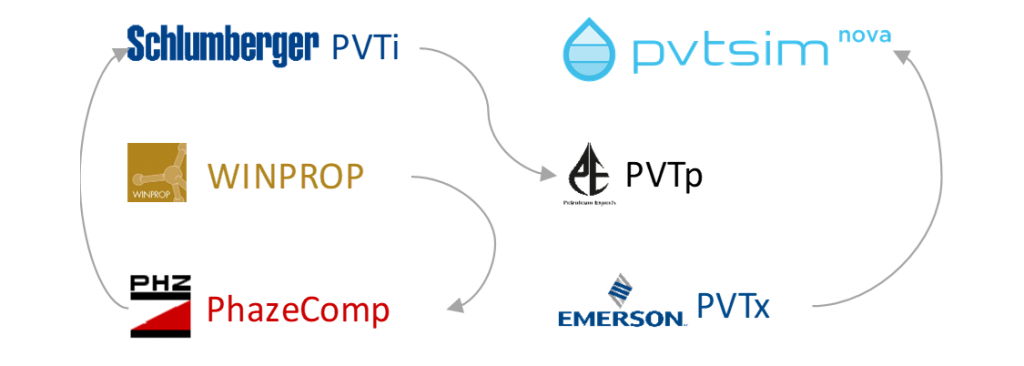Author: Bilal Younus
There are many commercial PVT packages in the oil and gas industry (e.g. PhazeComp, PVTi, PVTp, PVTSim, WinProp, PVTx). These PVT packages are either used for EOS model development or leverage an existing EOS model for different engineering applications or both. Occasionally, an EOS model is developed in a different (external) PVT package and is needed in another (inhouse) PVT package for the different applications. Transferring an EOS model from one PVT package to another is not always trivial.

Importing an EOS
The EOS model parameters can either be transferred from one PVT package to another either manually or directly from an ASCII file containing the EOS model parameters. For this purpose, the most common ASCII file used is an EOS model in E300 format which can be read by most commercial PVT packages, including PVTSim, PVTp and PVTi.
Usually, reading the EOS model with an ASCII file is the most convenient, however, it may not always be the most consistent approach. There are some classical pitfalls and quality checks one should be aware of:
- Always compare the EOS properties table in the PVT package against the values given in the ASCII file to make sure all the data is imported correctly. Sometimes the import algorithms do not work properly.
- In addition, one should always quality check calculated component properties. One such example is the critical volumes (or critical Z-factors) which are supposed to be related with the equation vc = ZcRTc/pc. For example, in the PVTp software, if an EOS model is imported from an E300 format containing critical Z-factors, the critical volumes are not updated with the above-mentioned equation leading to inconsistencies in viscosity calculations with the LBC correlation.
- Remember to select the right set of units before importing the EOS model in a PVT package.
- Make sure that usage of volume shifts is always on for EOS calculations. This is especially important for PVTp where these may be turned off by default.
- Another important aspect in importing the EOS model correctly is to check the limitations of your in-house PVT package regarding the number of EOS components. For example, an EOS model with 50+ components can be used in the newest PVTSim Nova version i.e. 4.1, but not in any version older than this.
Quality Checks
To make sure the EOS model is completely and consistently transferred from one PVT package to another, we recommend doing one saturation pressure calculation (and perhaps one single stage flash calculation) with the external PVT package (used to generate the EOS model) to get equilibrium oil and gas compositions, K-values and phase properties such as density, molecular weight, and viscosity for one example composition.
After the EOS model import process is finished, one should use the same example composition to simulate the same saturation pressure with the in-house PVT package. A correct and consistent import of the EOS model should yield all saturation pressure results (equilibrium compositions, K-values and phase properties) within 3-4 significant digits.
Learn more about our consulting capabilities
###
Global
Curtis Hays Whitson
curtishays@whitson.com
Asia-Pacific
Kameshwar Singh
singh@whitson.com
Middle East
Ahmad Alavian
alavian@whitson.com
Americas
Mathias Lia Carlsen
carlsen@whitson.com
About whitson
whitson
supports energy companies, oil services companies, investors and government
organizations with expertise and expansive analysis within PVT, gas condensate
reservoirs and gas-based EOR. Our coverage ranges from R&D based industry
studies to detailed due diligence, transaction or court case projects. We help
our clients find best possible answers to complex questions and assist them in
the successful decision-making on technical challenges. We do this through a
continuous, transparent dialog with our clients – before, during and after our engagement.
The company was founded by Dr. Curtis Hays Whitson in 1988 and is a Norwegian
corporation located in Trondheim, Norway, with local presence in USA, Middle
East, India and Indonesia
